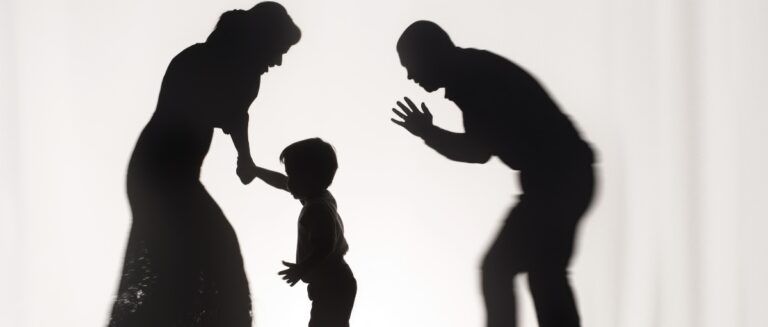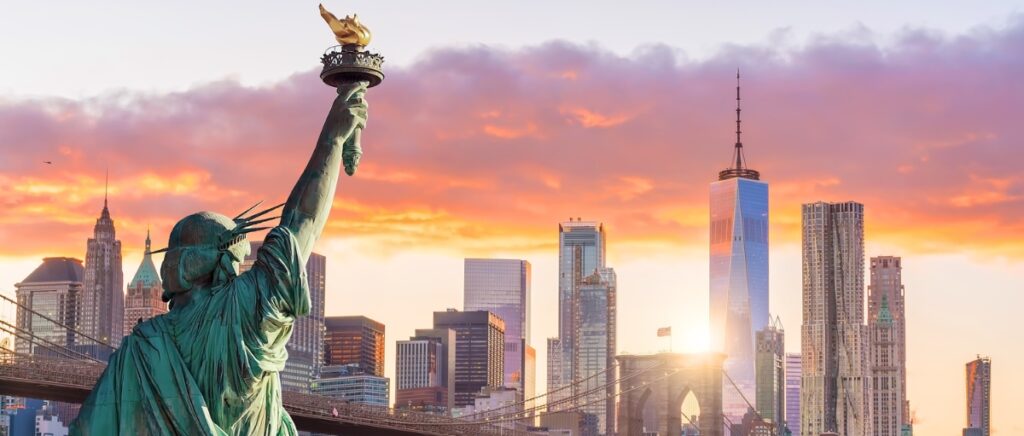The Statue of Liberty, the Empire State Building, Central Park, Broadway—the list of iconic New York City landmarks is both familiar and endless. It’s no wonder the Big Apple drew over 65 million visitors last year, making it one of the most popular tourist destinations in the United States.
Even for a metropolis as well-known and well-traveled as New York, there is always more than meets the eye; there are still countless secrets and surprises waiting to be uncovered about the city.
Whether you’re a native New Yorker, an adventurous traveler, or simply a curious mind, prepare to see America’s most iconic metropolis in a whole new light. Get ready to impress at your next cocktail party with the question “What is New York famous for?” tidbits.
Most of all, get ready to fall even more in love with the city that never sleeps. These interesting facts about New York show that even after three centuries, the city still has many more secrets to share. Let’s discover them together.
From New Amsterdam to The Big Apple
New York City is so iconic that it’s earned countless nicknames over the years, from “The City That Never Sleeps” to “The Empire City.” But the most famous of them all is undoubtedly “The Big Apple.” Interestingly, this was not one of the city’s earliest monikers.
In fact, New York was not even always called New York. The city’s origins date back to 1624, when it was established as a Dutch settlement called New Amsterdam. It served as the capital of the New Netherland colony, which encompassed parts of present-day New York, New Jersey, Connecticut, and Delaware.
The settlement occupied the southern tip of Manhattan Island, in the area now known as Lower Manhattan. It was renamed after the English took control of the colony in 1664. King Charles II gifted the lands to his brother, the Duke of York, who in turn branded the city with his own title.
So, in a matter of decades, this burgeoning settlement had already gone by a roster of names:
- New Amsterdam
- New Netherland
- New York
The city served briefly as America’s first capital shortly after the Revolutionary War, from 1785 to 1790. In these early years, the United States Congress met at New York City Hall (then called Federal Hall). George Washington was inaugurated as the first U.S. President at this site in 1789.
As for “The Big Apple,” that nickname wouldn’t emerge until the early 20th century. But more on that later. First, let’s look at how this renamed settlement at the tip of Manhattan grew into the most populous city in the country.
A City of 8.5 Million
New York City is a metropolis of mind-boggling scale. With over 8.5 million residents, nearly 1 in every 38 people in the entire United States calls the Big Apple home. If the borough of Brooklyn were its own city, it would be the 4th most populous in the nation. The same is true for the borough of Queens.
But New York’s staggering population is only half the story. Arguably more impressive than the sheer number of residents is their remarkable diversity. The city is truly a melting pot, home to people from every corner of the globe.
Consider these interesting facts about New York:
- 37% of New Yorkers were born in another country
- Over 800 languages are spoken throughout the city’s five boroughs
- Ethnic enclaves like Chinatown, Koreatown, and Little Italy are fixtures in the city’s cultural landscape
New York has long been a beacon for immigrants seeking opportunity in America. This is reflected in the city’s unparalleled ethnic and cultural diversity. Over 3 million New Yorkers are foreign-born, arriving since 2000.
The city is home to the largest Chinese population of any city outside of Asia. Incredibly, more Jewish people live in New York than in any other city outside of Israel. Walk through the neighborhoods of Jackson Heights or Flushing in Queens, and you’re likely to hear a dozen different languages spoken on a single block.
This vibrant tapestry of cultures is woven into every aspect of New York life, from the cuisines to the festivals to the art. It’s a defining feature of the city that sets it apart from any other on Earth. So, while New York may be first in population, it is truly in a league of its own when it comes to the richness of its human diversity.
New York’s Unique Geography
New York City is a coastal metropolis like no other. In fact, its 520 miles of coastline are longer than the combined coastlines of Miami, Boston, Los Angeles, and San Francisco. This massive stretch of waterfront spans the city’s five distinct boroughs.
While Manhattan is the most widely recognized of the boroughs, each has its own unique character and geographic features:
- Manhattan: The bustling heart of the city, home to landmarks like Central Park and the Empire State Building
- Brooklyn: A borough so populous it would be the 4th largest U.S. city on its own, known for its artistic neighborhoods and Coney Island beach
- Queens: The largest borough geographically and the most ethnically diverse urban area in the world, hosting both of the city’s major airports
- The Bronx: The northernmost borough, home to the iconic Yankee Stadium and the sprawling Bronx Zoo
- Staten Island: A more suburban borough featuring beaches, parks, and the famous Staten Island Ferry
Each borough could be a major city in its own right. Brooklyn alone is home to over 2.6 million people, more than the entire population of Houston, Texas. If Queens were a standalone city, it would also rank 4th in population nationwide.
Beyond the boroughs, New York boasts a surprising array of geographic features. The city is home to over 1,700 parks, including the 843-acre oasis of Central Park in Manhattan. In the heart of Lower Manhattan, the East River flows into New York Harbor, meeting the estuary of the Hudson River.
And below the surface, New York holds yet more surprises. The Lowline on the Lower East Side is the world’s first underground park, highlighting the city’s innovative approach to green space in an urban jungle.
From its hundreds of miles of coastline to its sprawling parks and hidden gems, New York’s geography is as diverse as its population. The five boroughs provide a tapestry of neighborhoods, each feeling like a distinct city unto itself. Yet together, they form a cohesive whole, unlike any other urban landscape on Earth.
New York’s Iconic Attractions
No exploration of New York City would be complete without highlighting its world-renowned landmarks and attractions. These icons are so ingrained in American culture that they’ve taken on an almost mythical status.
The Statue of Liberty is perhaps the most quintessential symbol of New York and America as a whole. But did you know that Lady Liberty was actually a gift from France? She arrived in 350 individual pieces packed in 214 crates. Reassembling this 151-foot-tall copper statue was a feat in itself!
Central Park is another fixture of the New York landscape. As the first landscaped public park in the U.S., it set a precedent for urban green spaces nationwide. Today, this 843-acre oasis is the most filmed location in the world, with over 300 movie credits to its name.
Of course, no mention of New York attractions would be complete without the iconic Empire State Building. This 102-story skyscraper was the tallest building in the world for nearly 40 years. It’s struck by lightning an average of 25 times per year.
Other can’t-miss New York attractions include:
- Times Square: The dazzling heart of the Broadway theater district
- The Metropolitan Museum of Art: The largest art museum in the U.S.
- The Brooklyn Bridge: Once the longest suspension bridge in the world
- Rockefeller Center: Home to the famous Christmas tree and ice rink
From architectural marvels to cultural treasures, New York’s attractions are in a league of their own. But the city’s iconic status extends beyond its physical landmarks, permeating every aspect of its cultural fabric.
The Cultural Fabric of New York
New York City’s culture is as vibrant and multifaceted as its population. The city pulses with an unrivaled creative energy that spills out onto its streets, stages, and storefronts.
The global influence of New York’s arts scene cannot be overstated; the city is a mecca for visual artists. Broadway is synonymous with world-class theater, boasting 41 professional stages. And the fashion industry runs on the New York runways, setting trends that ripple worldwide.
But New York’s cultural impact extends far beyond the highbrow arts. The city is the birthplace of cultural phenomena as diverse as hip-hop and disco, graffiti art, and comic books. It even birthed its own culinary style, epitomized by a particular hand-tossed slice.
That’s right, we’re talking about New York pizza. Thin crust, wide slices, foldable yet crisp—this is the pizza style that launched a thousand imitators. The first pizzeria in the United States opened in NYC in 1905, and the city has been a pizza pioneer ever since. Another interesting fact about New York is that a slice of pizza and a subway ride have remained roughly the same price up until 2005!
Other quintessential New York culinary inventions include:
- The Waldorf salad: Invented at the Waldorf-Astoria Hotel
- Eggs Benedict: First served at the famous Delmonico’s restaurant
- New York cheesecake: A creamy twist on the European original
- The black and white cookie: A cake-like cookie iced in chocolate and vanilla
From high art to street eats, New York has made an indelible mark on American culture. The city’s cultural output is as dizzying and diverse as its skyline, and every bit as impressive.
The Enduring Allure of New York
Throughout these interesting facts about New York City, one theme emerges again and again: unparalleled diversity. It is the common thread that ties together the city’s history, geography, landmarks, and culture.
New York is a city of superlatives. It is the most populous, most linguistically diverse, and most culturally influential American city. It boasts the largest Chinatown, the largest Jewish population outside Israel, and likely even the most pizza consumed per capita.
But beyond these impressive statistics, what truly sets New York apart is its human scale. Behind every number and accolade are millions of individual New Yorkers, each with their own story. These tales weave together to form the rich tapestry of the city.
From the Dutch settlers of New Amsterdam to the fresh-off-the-boat immigrants of today, New York has always been a beacon for those seeking a new life. It is a city that rewards boldness, ambition, and ingenuity—a true melting pot where people of all backgrounds can pursue their own version of the American Dream.
So, let us celebrate New York in all its fascinating complexity. Let us marvel at its superlatives and explore its hidden corners. Most of all, let us remember that beneath the soaring skyscrapers and glittering lights, it is the indomitable spirit of New Yorkers that truly makes this city great.
Sources
Statista. (2019) New York City international tourists. Retrieved from https://www.statista.com/chart/18811/new-york-city-international-tourists/
History. (2024) New Amsterdam becomes New York. Retrieved from https://www.history.com/this-day-in-history/new-amsterdam-becomes-new-york
Digital History. (n.d.) The Dutch colonization of New York. Retrieved from https://www.digitalhistory.uh.edu/disp_textbook.cfm?smtID=3&psid=101
History. (2024) 8 forgotten capitals of the United States. Retrieved from https://www.history.com/news/8-forgotten-capitals-of-the-united-states
PBS. (n.d.) The history of New York City. Retrieved from https://www.pbs.org/wgbh/americanexperience/features/new-york-historic/
New York Dearest. (2024) Nicknames of New York City. Retrieved from https://newyorkdearest.com/new-york-city-nyc-nicknames/
Insight Vacations. (2023) A brief history of New York City. Retrieved from https://www.insightvacations.com/blog/new-yorks-history/
World Economic Forum. (2017). Queens: The most linguistically diverse place on Earth. Retrieved from https://www.weforum.org/agenda/2017/02/queens-in-new-york-has-more-languages-than-anywhere-in-the-world/
NYC Planning Department. (2013). NYC population trends. Retrieved from https://www.nyc.gov/assets/planning/download/pdf/data-maps/nyc-population/nny2013/chapter2.pdf
NYC Mayor’s Office. (2013). Coastal resilience report. Retrieved from https://www.nyc.gov/html/sirr/downloads/pdf/final_report/Ch3_Coastal_FINAL_singles.pdf
PIX11. (2024) Brooklyn’s population compared to U.S. states and European cities. Retrieved from https://pix11.com/news/local-news/brooklyns-population-is-bigger-than-these-us-states-and-european-cities/
NYC Parks. (n.d.) Frequently asked questions. Retrieved from https://www.nycgovparks.org/about/faq
Central Park Conservancy. (n.d.) Central Park overview. Retrieved from https://www.centralparknyc.org/about
Smithsonian Magazine. (2015) Statue of Liberty’s arrival in 350 pieces. Retrieved from https://www.smithsonianmag.com/smart-news/statue-liberty-arrived-350-pieces-180955920/
Historic Towns of America. (n.d.) Most filmed location in the U.S. Retrieved from https://historictownsofamerica.com/most-filmed-location
Britannica. (2024) Empire State Building history. Retrieved from https://www.britannica.com/topic/Empire-State-Building
Empire State Building. (n.d.) Facts and figures about the Empire State Building. Retrieved from https://www.esbnyc.com/about/facts-figures
Course Hero. (n.d.) New York City history exam. Retrieved from https://www.coursehero.com/file/46356339/last-exam/
Lombardi’s Pizza. (n.d.) The first pizzeria in America. Retrieved from https://www.firstpizza.com/
American Institute for Economic Research. (2021) The twilight of the NYC pizza principle. Retrieved from https://aier.org/article/twilight-of-the-nyc-pizza-principle/











